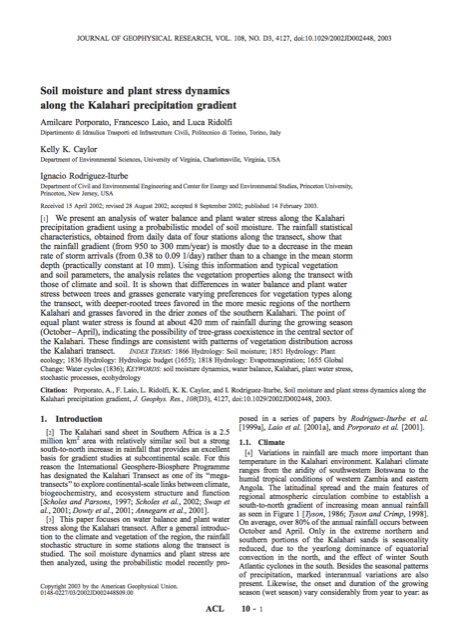Soil moisture and plant stress dynamics along the Kalahari precipitation gradient

Porporato, A., F. Laio, L. Ridolfi, K.K. Caylor, and I. Rodriguez-Iturbe (2003). “Soil moisture and plant stress dynamics along the Kalahari precipitation gradient.” Journal of Geophysical Research – Atmospheres, 108(D3):4127-4134.
We present an analysis of water balance and plant water stress along the Kalahari precipitation gradient using a probabilistic model of soil moisture. The rainfall statistical characteristics, obtained from daily data of four stations along the transect, show that the rainfall gradient (from 950 to 300 mm/year) is mostly due to a decrease in the mean rate of storm arrivals (from 0.38 to 0.09 1/day) rather than to a change in the mean storm depth (practically constant at 10 mm). Using this information and typical vegetation and soil parameters, the analysis relates the vegetation properties along the transect with those of climate and soil.
It is shown that differences in water balance and plant water stress between trees and grasses generate varying preferences for vegetation types along the transect, with deeper-rooted trees favored in the more mesic regions of the northern Kalahari and grasses favored in the drier zones of the southern Kalahari. The point of equal plant water stress is found at about 420 mm of rainfall during the growing season (October-April), indicating the possibility of tree-grass coexistence in the central sector of the Kalahari. These findings are consistent with patterns of vegetation distribution across the Kalahari transect.
